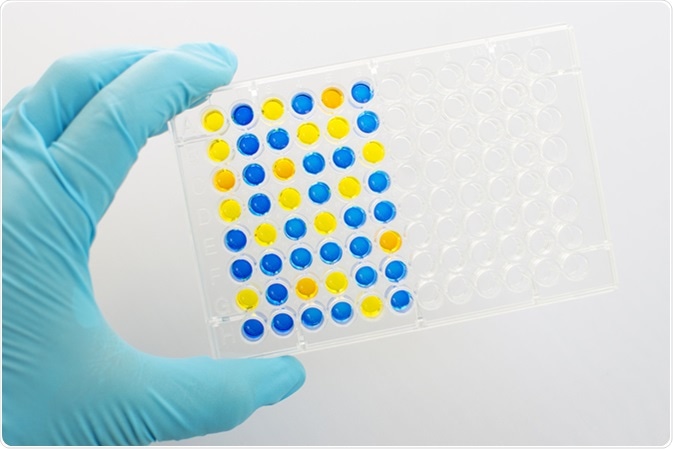What is Immunochemistry?
Immunochemistry is a branch of chemistry that involves the study of the components and functions of the immune system such as the nature and interactions of antigen-antibody.
Immunochemistry involves the use of simple, rapid, robust yet sensitive automated methods for routine analyses in clinical laboratories. This biochemical field brought about a phenomenal change in the laboratory and commercial testing with the invention of immunoassay equipment and a wide range of immunological reagents.
The beginning of immunochemistry dates back to 1790 when Edward Jenner discovered the vaccination against smallpox. Almost 100 years later, in 1890, Emil von Behring, the German physiologist, discovered serum antibodies to cure diphtheria and tetanus. From there on, many researchers contributed to the field of immunochemistry by introducing crucial immunohistochemistry and immunocytochemistry techniques.

Enzyme-linked immunosorbent assay (ELISA), Immunology testing method in 96 wells microplate. Image Credit: Jarun Ontakrai/Shutterstock.com
Immunohistochemistry (IHC)
This involves the use of monoclonal and polyclonal antibodies on histologically processed tissue sections in order to spot specific antigens in healthy or diseased tissue. IHC makes use of labeled enzymes such as peroxidase and alkaline phosphatase and even colloidal gold at light microscopy and electron microscopy levels in the diagnosis of cancers and in surgical pathology.
The steps involved in IHC are (i) deparaffinization of the tissue sections, (ii) use of hydrogen peroxide or free avidin for quenching of endogenous, enzymes peroxidase and alkaline phosphatase, (iii) retrieval of the antigen, (iv) blocking of non-specific binding sites, (v) binding with primary antibody and biotinylated secondary antibody, (vi) detection using polymer labeling. (vii) addition of the chromogen substrate DAB, and (viii) counterstaining, dehydration, and covering of the slide.
Immunocytochemistry (ICC)
This branch involves the microscopic study of cell samples in a suspension or cells grown in a monolayer. Here, the staining process is the same as IHC wherein the enzymes catalyze the deposition of a dye at the antigenic sites within the cell sample. In ICC, the expression of the protein in a cell or group of cells also aids in understanding its intracellular localization.
ICC assays are of two types, i.e. the direct ICC and indirect ICC assay. The difference between these two assays is the use of a secondary antibody. In indirect ICC assay, the cell samples undergo incubation with a primary antibody and secondary antibody whereas in direct ICC, secondary antibody incubation is not carried out.
Applications of Immunochemistry
Apart from the use of IHC in identifying prognostic markers in cancer, it is used to predict response to therapy, to identify infections as well as in muscular and neurodegenerative disorders. On the other hand, ICC, which involves the collection of cytological direct smears, is effective in identifying cancers such as metastatic Merkel cell carcinoma and in lung adenocarcinoma.
Future of Immunochemistry
Many research studies have emphasized that IHC will play a significant role in the coming years. Genomic IHC would be used in targeted therapy to identify proteins and to develop better recombinant monoclonal antibodies. Immunochemistry is rapidly emerging as a reliable field that can aid in the diagnosis of infectious and neoplastic processes and as a guide to appropriate therapy.
Further Reading